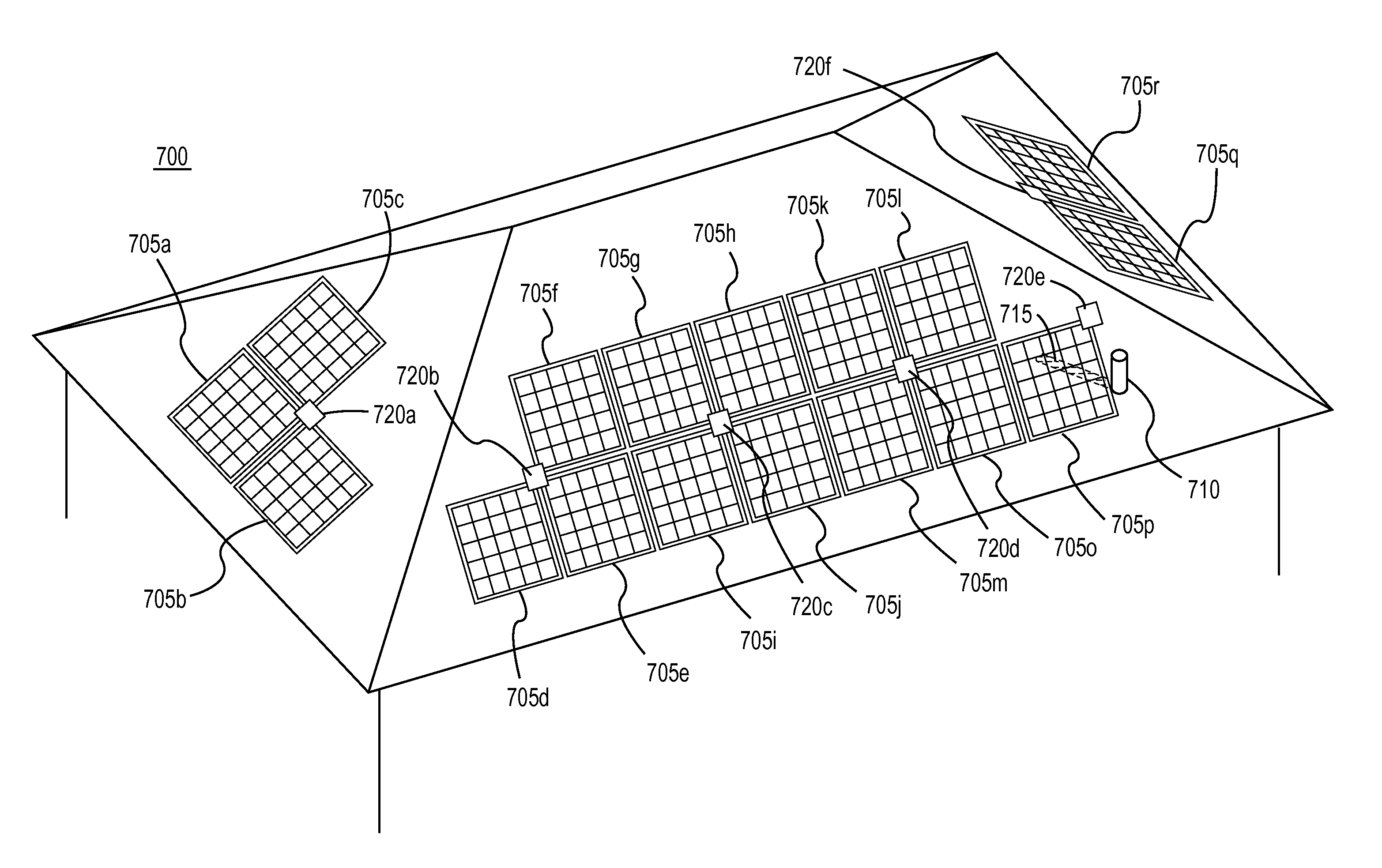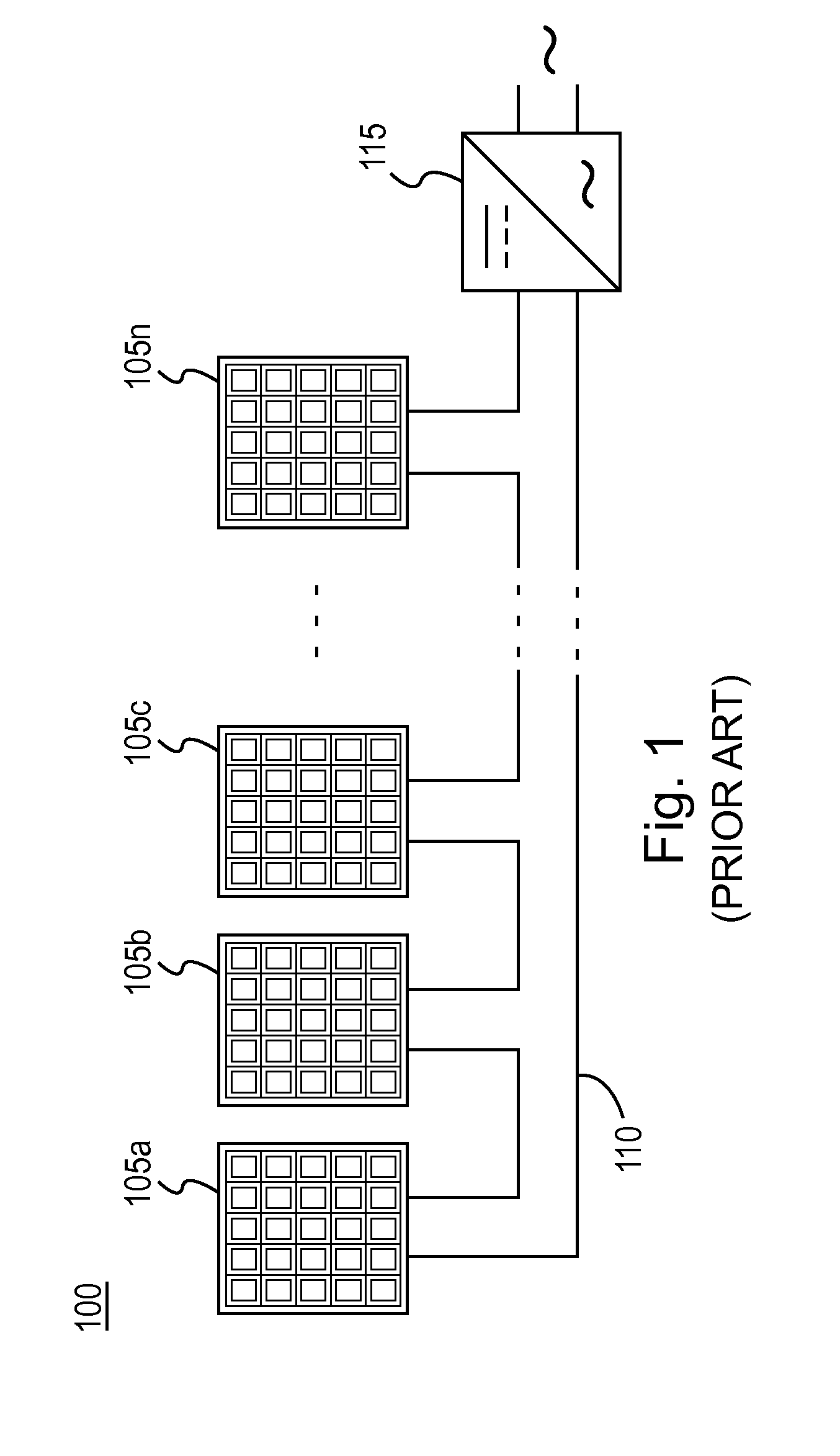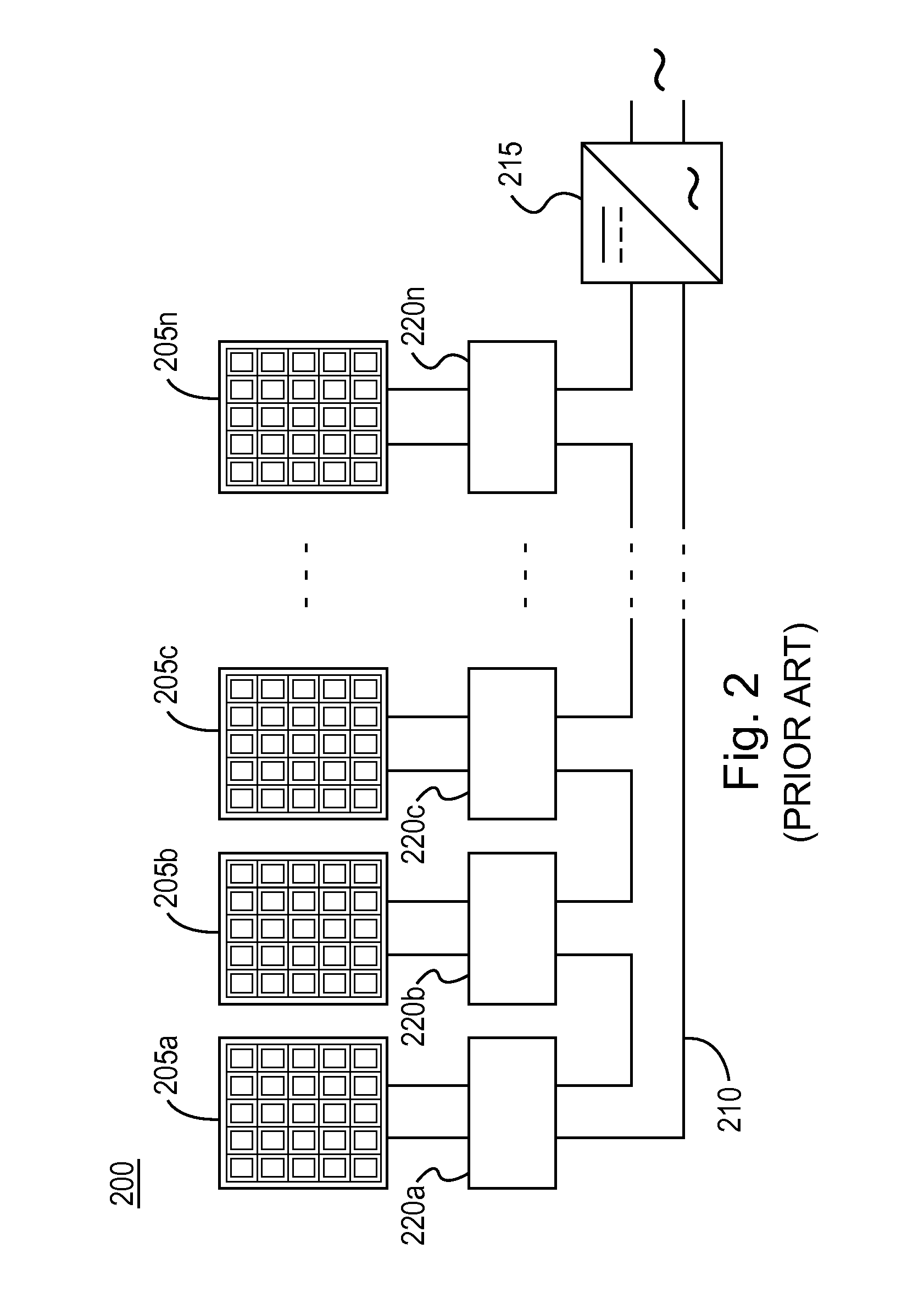First, conventional photovoltaic systems require that each solar panel in a string of solar panels maintain the same
azimuth.
However, on a residential rooftop, for example, space on south facing portions of a roof may be limited such that a homeowner cannot install a meaningful number of solar panels on a rooftop.
Homeowners with rooftops that limit solar panel installation on the desired
azimuth are unable to efficiently take
advantage of conventional photovoltaic technology.
In other words, a solar panel that is situated at an ideal angle to absorb
solar energy will produce more direct current electricity than a solar panel that is situated at a non-ideal angle to absorb solar energy.
Such a configuration can be problematic in practice for two reasons.
First, in many residential (and other) situations, it is difficult in practice to install every solar panel in a
photovoltaic system at a consistent angle relative to every other solar panel and relative to the sun.
Second, rooftop conditions on, for example, a residential rooftop may limit the available space for solar panels in a photovoltaic system to be installed at a consistent azimuth angle and
elevation angle.
In some conventional technologies, power generation is limited by solar panels that cannot be placed at a consistent azimuth angle and
elevation angle.
In other words, if one solar panel generates less power because the solar panel is sub-optimally placed at an azimuth angle or an
elevation angle that differs from other solar panels to which the sub-optimally placed solar panel is connected, every other solar panel, even if optimally situated, is limited in power production to the same level as the one sub-optimally situated solar panel.
Accordingly, in some conventional technologies, a single sub-optimally situated solar panel can lower the power generation abilities of a photovoltaic system as a whole by reducing the power generation of every other solar panel in the photovoltaic system.
Such a configuration limits the overall power that can be generated by the photovoltaic system and reduces the efficiency of the photovoltaic system.
Yet another drawback of conventional photovoltaic systems results from local shading on one or more solar panels in the photovoltaic system.
Furthermore, for conventional photovoltaic systems, because every solar panel in the photovoltaic system should be positioned on a consistent azimuth, at a consistent elevation angle relative to each of the other solar panels in the system and the sun, and in an unshaded portion of a rooftop, conventional photovoltaic systems cannot efficiently take
advantage of available space on a residential rooftop.
Similarly, a “solar panel mismatch” caused by manufacturing differences between solar panels, mixed types of solar panels, temperatures, and other issues can cause the string of solar panels in photovoltaic system 100 to operate at less than the desirable level.
Thus, in addition to being prone to inefficient operation, traditional string topologies, such as photovoltaic system 100, are not ideal for residential use because residential rooftops, for example, have limited available space where a desirable and consistent azimuth angle and a consistent elevation angle can be obtained in an unshaded area of a residential rooftop.
Therefore, a failure of any of maximum power point
converters 220a-220n, or any failure in electrical continuity along the string, would result in failure of that entire string to produce energy.
Thus, the financial cost of photovoltaic system 300 is much greater because a homeowner must buy a microinverter for each solar panel the homeowner intends to use.
Microinverters 315a-315n are also complex, requiring more electrical components (than maximum power point
converters 220a-220n of photovoltaic system 200, shown in FIG. 2) making microinverters 315a-315n more expensive in terms of equipment costs and less reliable, due to the large number of electrical components exposed to harsh conditions.
Also, in attempting to prevent excessive reliability problems, these components must typically be specified as higher-grade versions able to withstand wider temperature extremes, which significantly increases costs.
Photovoltaic system 300 is also more expensive, more complex, and more subject to reliability problems than photovoltaic system 200.
In the configuration described as photovoltaic system 300, this inversion of direct current electricity into
alternating current electricity is inefficient for two reasons.
However, because each
voltage increase and waveform conversion is subject to inherent inefficiencies, microinverters 315a-315n introduce electrical losses into photovoltaic system 300.
However, photovoltaic system 400 is at a
disadvantage when compared with photovoltaic system 200 in that photovoltaic system 400 increases the number of inverters needed, meaning the number of string inverters 215 in system 200, versus the number of mini-inverters 415 in system 400, for photovoltaic systems that include more than sixteen solar panels and, therefore, increases the overall system complexity and the number of failure points in that portion of photovoltaic system 400.
Further, similar to system 300, the intended design of system 400 requires the mini-
inverter to be located on the roof in that harsher environment, making it similarly susceptible to reliability issues.
 Login to View More
Login to View More  Login to View More
Login to View More 


